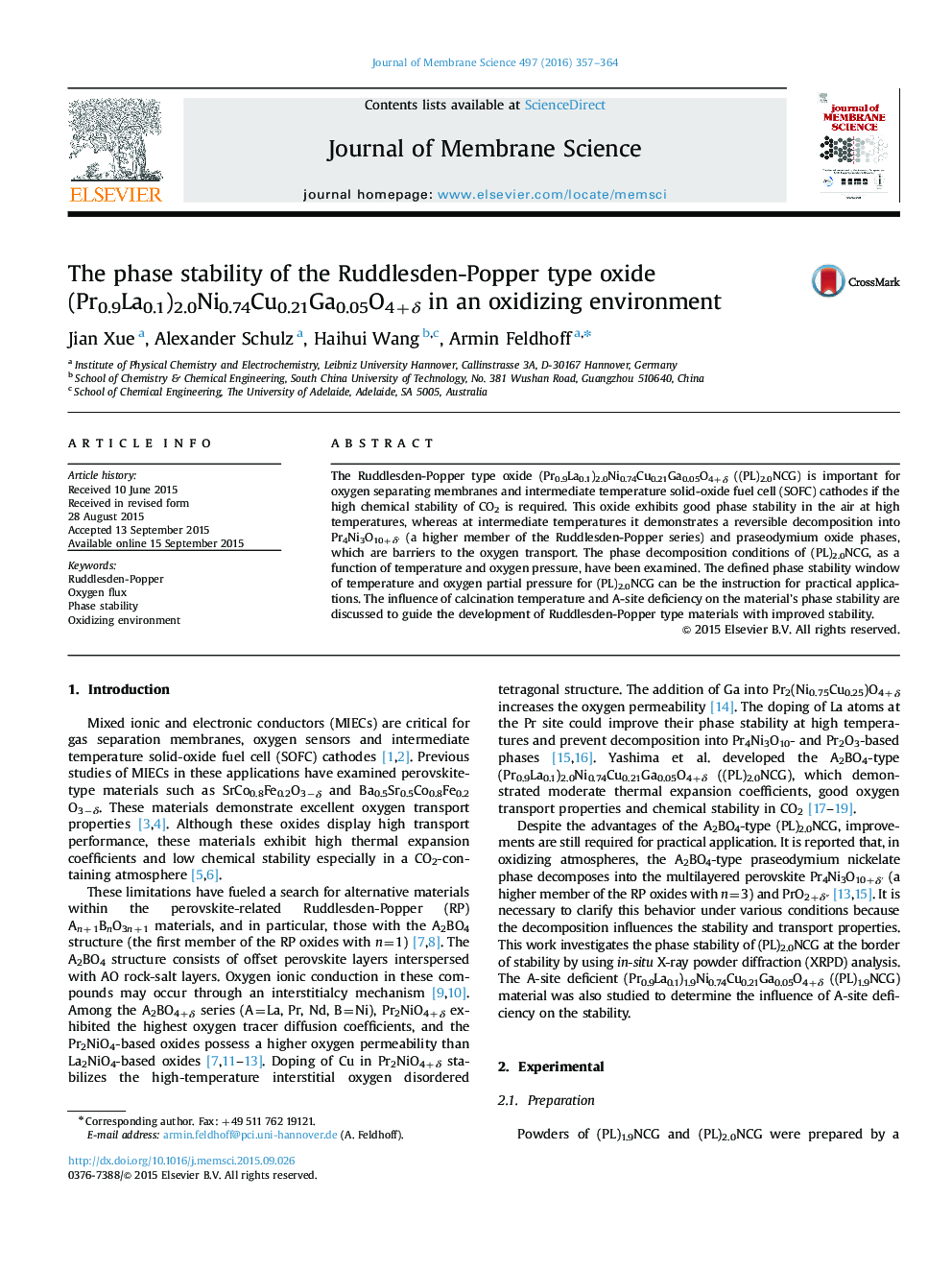| Article ID | Journal | Published Year | Pages | File Type |
|---|---|---|---|---|
| 632674 | Journal of Membrane Science | 2016 | 8 Pages |
•In-situ XRPD was used to estimate the oxidative boundary conditions of RP oxide.•The Ellingham diagram was constructed to guide practical operation.•Two methods were proposed to improve the oxidative stability of RP oxide.
The Ruddlesden-Popper type oxide (Pr0.9La0.1)2.0Ni0.74Cu0.21Ga0.05O4+δ ((PL)2.0NCG) is important for oxygen separating membranes and intermediate temperature solid-oxide fuel cell (SOFC) cathodes if the high chemical stability of CO2 is required. This oxide exhibits good phase stability in the air at high temperatures, whereas at intermediate temperatures it demonstrates a reversible decomposition into Pr4Ni3O10+δ′ (a higher member of the Ruddlesden-Popper series) and praseodymium oxide phases, which are barriers to the oxygen transport. The phase decomposition conditions of (PL)2.0NCG, as a function of temperature and oxygen pressure, have been examined. The defined phase stability window of temperature and oxygen partial pressure for (PL)2.0NCG can be the instruction for practical applications. The influence of calcination temperature and A-site deficiency on the material’s phase stability are discussed to guide the development of Ruddlesden-Popper type materials with improved stability.
